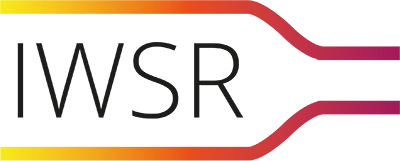Following a tumultuous 2017 and 2018, the wine category continues to change across the board with some surprising standout varietals, colours and regions showing marked improvement over recent years.

Colour Breakdown: Rosé on the rise
Wine drinkers around the world continue to show a preference for red wine, but in 2018 volumes dropped by nearly 4% as demand in the French and Chinese red markets recorded big falls; the decline represents the third year of decline in a row and has pushed down the share of Red to 54%. Poor harvests in France, Germany, Italy, Spain and South Africa affected demand for white wine, which saw volumes drop by 0.5%, the first decrease since 2014. Volumes may have fallen, but white wine share increased to 36% of the total market.
White wine sales will have been impacted by a shift to rosé: in the US, rosé is becoming less seasonal and this is helping to drive demand year-round. Buoyant growth in the US has helped rosé to increase global sales by 1.9%, and rosé has grown to take up 9% of the market.
Region Breakdown: Poor 2017 harvest hits Bordeaux and Rioja
The largest wine growing region in France, Bordeaux, saw its global wine performance fall back steeply last year. The frost damaged much of the harvest in 2017, but it was the well reported slump in exports to China that was the main factor behind the losses last year. The Bordeaux market fell by 10% in 2018, but the public perception of wines from Bordeaux remains positive and sales are likely to rebound in the future.
Spain too endured a tough harvest with 2017, recorded as being the worst grape harvest since 1962. Inevitably, this had repercussions for the third biggest global wine region: Rioja. The poor harvest not only limited availability, it pushed up prices which may have contributed to a sales drop last year of 7%. There had been positive signs in recent years that Rioja could continue to build its export business, but domestic sales also gained share last year.
2018 was a bumper year for wines from the Veneto region in the North Eastern region of Italy: IWSR numbers show a jump in sales volume of almost 8% in 2018. With demand for Venetian wine remaining strong in Germany and the UK.
This data reflects a growing recognition of the rising quality of Venetian wines and the authority’s efforts to encourage more exports; historically, wine production techniques in Italy were passed down from generation to generation, but the trend of the most recent generation of winemakers has been to go away to study winemaking instead. This has helped to enhance the global reputation of Italian wines.
Organic Breakdown: Scandinavia leads the way
The global share of organic wine has now risen to 2.4%, the equivalent of nearly 690m bottles of wine. 2018 posted another rise, although the 2% increase represents a slowdown on recent years. The reasons for this growth are numerous: as consumers become increasingly environmentally conscious, so too will the opportunities for organic wine grow; the perception that wine without added sulphites and other chemicals used in the growing process will deliver less of a hangover the next day should increase the appeal of organic wines to the public.
IWSR figures show that it is Scandinavia where organic wine has established itself as part of the mainstream wine market.
IWSR figures show that it is Scandinavia where organic wine has established itself as part of the mainstream wine market: the region is home to some of the most environmentally conscious consumers in the world and this is reflected by the market data in these countries. In Finland and Denmark, organic wines make up almost 5% of the wine consumed. In Norway that rises to more than 10%, but it is Sweden where organic wine has made the most inroads into the market: IWSR reports show that more than a fifth of wine sold in the country last year was classified as organic.
In Sweden, the development of the organic wine segment is not just consumer driven, the Government too is active in promoting organic wine consumption. Government alcohol monopoly Systembolaget gives favourable listings and support to organic products, and their sales figures for quarter 1 2019 showed organic wine growth of 22% on the same period last year.
Country of Origin Breakdown: US wine increasing despite global losses
Of the top ten still wine producers, IWSR figures show that only US wine recorded a rise in consumption last year. The global results reflect a year that was heavily impacted by poor harvests in many key producer markets in addition to the downturn in Chinese imports.
At 0.4%, US wine sales growth was modest and was driven exclusively by domestic sales, with exports falling by nearly 2%. Local sales have been helped by innovative marketing in the digital space, exposing wine enthusiasts to new wineries in lesser known wine regions. The use of canned packaging has also gained momentum domestically, making home produced wine appropriate to more occasions and relevant to a younger audience. The improving quality of US wine in box packaging is also increasing demand in this category.
Export-wise, South African wine fared best last year and consumption of South African wines outside of South Africa registered a rise of around 1%. Exports were aided by favourable currency rates which allowed South African wine exports unexpected growth in China, with a strong rise of nearly a fifth. Germany too yielded marked growth for South African wine exports, with developing African markets like Namibia and Kenya contributing.
Chilean wine volumes may have dipped last year, but of the leading wine producing nations it has been Chilean wine that has enjoyed the best results over the last decade. Despite domestic sales decreasing, Chilean export sales have increased by a nearly a third since 2008.
Variety Breakdown: Sauvignon blanc in fashion
According to IWSR numbers, cabernet sauvignon maintains its standing as the most widespread grape in the global wine arena: the ease with which it can be grown and its propensity to differing climates has caused it to be adopted in wine regions across the globe. Despite this, 2018 did see the grape variety lose market share.
Cabernet sauvignon was another victim of the fallout in China, which accounts for 40% of the variety’s sales; as such, the 9% fall significantly impacted total global figures. Without China, cabernet sauvignon outperformed the global market for still wine. Sales in the US, where around a third of sales stem from, remained fairly stable.
Chardonnay’s popularity is also underpinned by how versatile it is to grow; the variety had peaked in the eighties, but IWSR figures suggest that it had been on the rise again until last year. Although 2018 saw the grape shrink marginally, it did still gain market share. Chardonnay is notably popular in the US, which accounts for nearly two thirds of its consumption and sales continue to grow in this market.
Sauvignon blanc is the third most popular grape and made additional gains this year. White wine has yet to have a major impact in China, and this provided immunity to sauvignon blanc from the wine losses seen in the world’s biggest wine market in 2017.
The small rise in sauvignon blanc sales last year were minor compared to recent advances, but the market has remained relatively stable and sales might be expected to rise at a faster rate this year. Sauvignon blanc was the first type to be bottled using a screw cap in any commercial volume and has helped establish New Zealand’s reputation as a high-quality white wine producer.
Of the less mainstream varieties, chenin blanc grew significantly last year with surprising double-digit gains. This can in part be accredited to the scale of losses seen in 2017 but is mainly due to strong export growth from South Africa to the UK and Germany. The full-bodied chenin blanc is suited to the German palate and is the most widely planted grape variety in South Africa.
For a more in-depth view at the numbers, take a look at our IWSR Global Database.
For enquiries, please email enquiries@theiwsr.com or call us on +44 (0)20 7689 6841.
Category
Market
- Beer
- Brandy
- Cider
- Gin
- Irish Whiskey
- Low-/No-Alcohol
- Mixed Drinks
- RTDs
- Rum
- Scotch
- Spirits
- Tequila
- US Whiskey
- Vodka
- Whisky
- Wine





